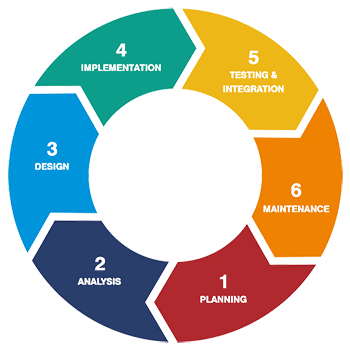Software Development Life Cycle

1. Planning
We collect all the relevant information from the customer to develop custom software development solutions as per their requirements.
2. Analysis
The system and documents are prepared as per the requirement specifications (SRS). This helps us define overall system architecture and technology stack.
3. Design
Once the requirement analysis phase is completed, the next step is to design and document software needs. Developers start to build the entire system by writing code using the chosen programming language, techniques, and methodologies.
4. Implementation
The final software is released and checked for deployment issues.
5. Testing and Integration
Evaluating the quality of software with the aim of finding and fixing defects.
6. Maintenance
According to the service level agreement, we ensure that needs continue to be met and that the system continues to perform as per the specification mentioned in the first phase.